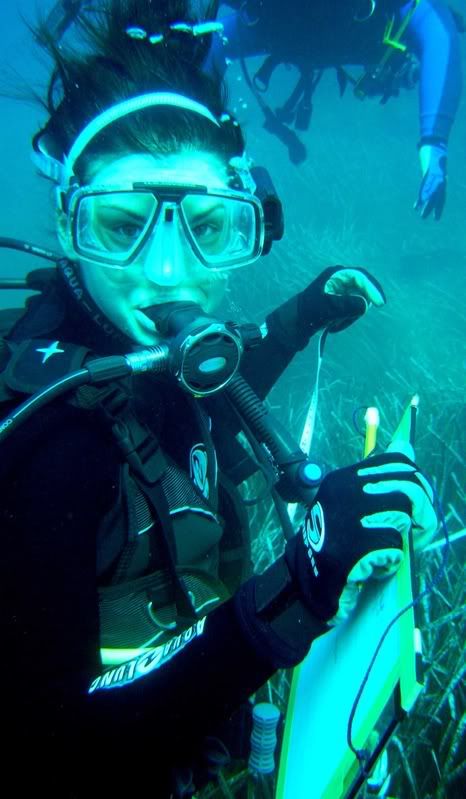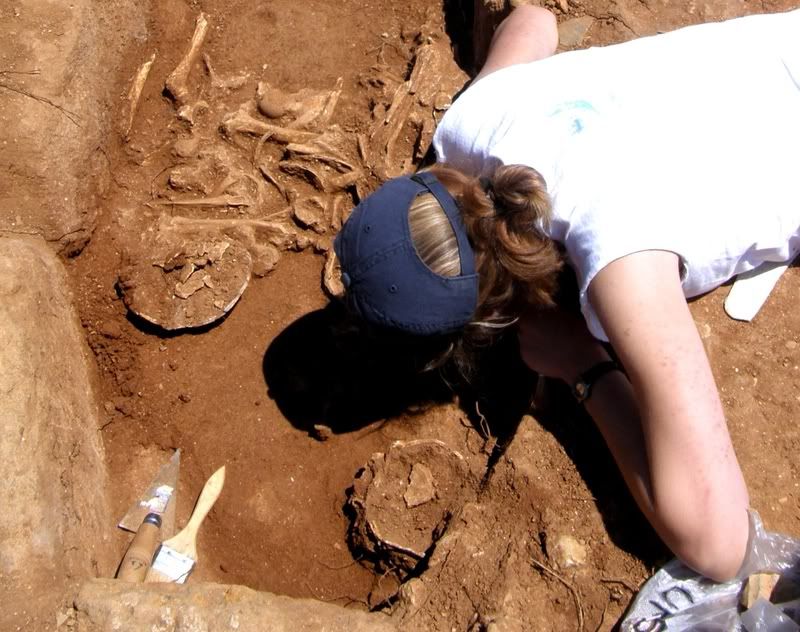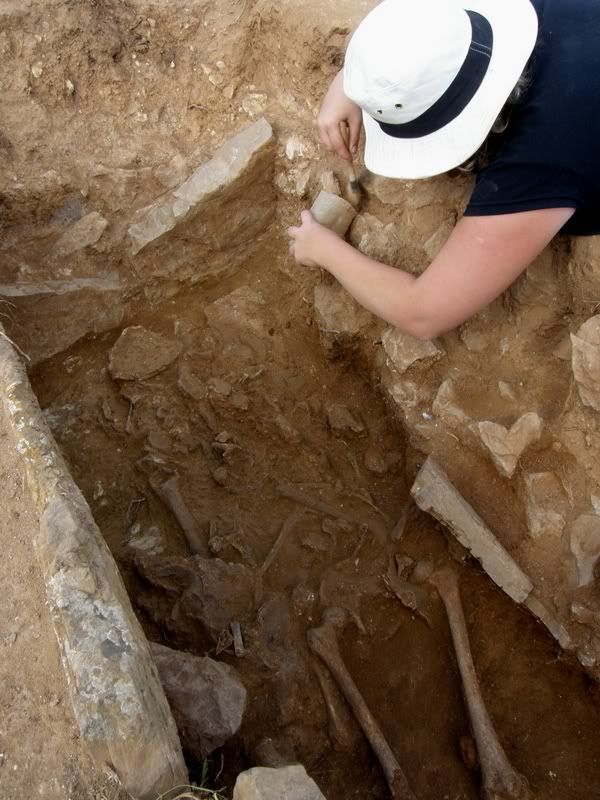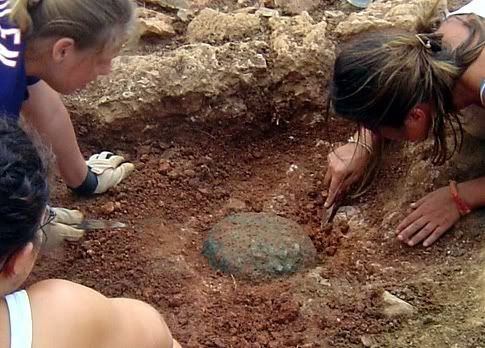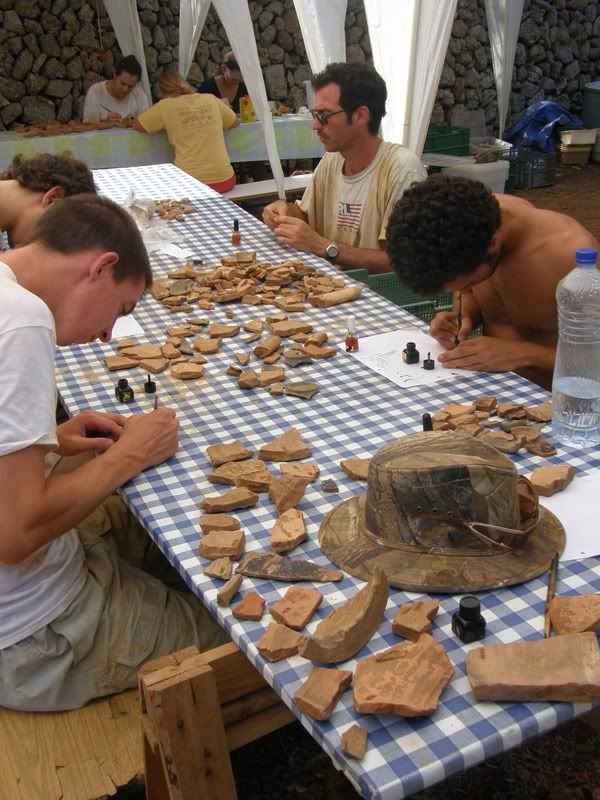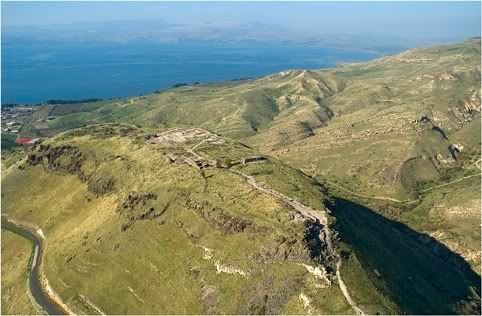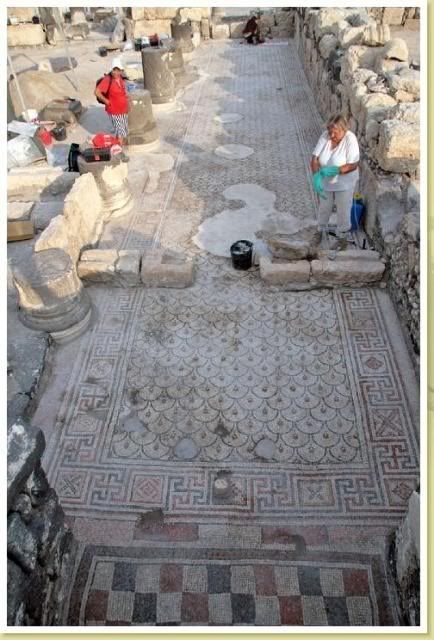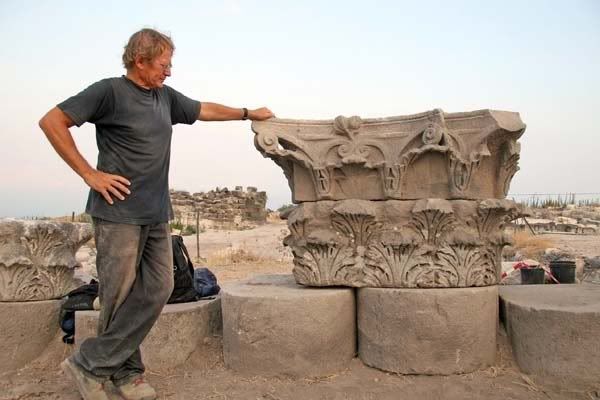Wenas Creek: Life in 16,000 B.P.
If you were to walk along the terrain near the small town of Selah, Washington, you would see a hilly, desert-like landscape, reflecting the dry climate that is characteristic of the eastern half of this Pacific Northwest state; however, during Pleistocene times (1.8 million to 10,000 years B.P.), you would see a wetter, cooler landscape, consisting of a greater abundance of vegetation, water sources, and fauna long ago extinct. Mammoths roamed this ancient ecosystem. Isolated examples of their bones have been found scattered across this, the Columbian Plateau area. Rare, however, is the instance where an assemblage of associated bones from a single specimen can be found in one location. Such a site is the subject of ongoing investigations being conducted by a research team under the direction of Dr. Patrick Lubinski of Central Washington University. Known as the Wenas Creek Mammoth site, it has thus far revealed hundreds of bone elements, including nearly complete mammoth leg bones, vertebrae, toe bones and shoulder blade, as well as the remains of bison, dated to approximately 16,000 years B.P. Additional bones remain partially exposed from the 2009 excavations and are awaiting removal in 2010. Equally intriguing, human artifacts (cryptocrystalline flakes) were discovered in proximity to, and 15 centimeters above, a mammoth bone, suggesting a human presence at the site. Were there humans in the midst of these ancient creatures as early as 16,000 years ago? More work needs to be done to answer that question. The goals of the project are to recover additional mammoth remains and associated fauna and paleo-environmental data, and to place these into the geological context. Additionally, it is hoped that the research will reveal the taphonomic relationships between the finds, as well as more evidence of human presence.
Individuals interested in being a part of this exciting work of discovery will have the opportunity to participate either as field school students or in other volunteer capacities, learning the tools and techniques common to BOTH paleontology and archaeology. The Wenas Creek Mammoth Project Field School will be conducted during the summer of 2010 and will offer a full agenda of practical learning experiences.
The Field School is open to anyone eligible to register for college credits (college students or not) and may be audited by those not wanting college credit. There are no prerequisites, but some background in archaeology, geography and/or geology is strongly encouraged. For the first week (beginning June 21), students will be training with lecture, lab studies, field trips, and perhaps hikes. They will acquire some background in archaeological field methods, sediments, mammoths, maps, and the regional environment. The first day will be entirely on campus, but they may be in the field or on campus thereafter. Primary field tasks will be recovery of mammoth bones and any artifacts, and collection of stratigraphic and geomorphic information to place the finds into context. To do this, a number of 2 x 2 m units will be excavated, mapping all encountered bone and artifacts with a total station theodolite. Students may use shovels, wheelbarrows, trowels, brushes, and/or fine bamboo skewers for excavation, and shake the recovered material through 1/8" screens. As bone is recovered, the team will make use of a consolidant to stabilize fragments and prevent them from disintegrating. As they excavate the 2 x 2 m units, they will also carefully record the stratigraphy of each, and link this to the already-described stratigraphy of the backhoe trench excavated in 2005. Ultimately, the recovered bones will be linked to the stratigraphy and associated geomorphology of the site. Students may also gain experience with pedestrian archaeology. As part of an exchange program, they may spend up to a week on a survey crew working through central Washington. This exchange is with a parallel CWU archaeology summer field school under the direction of Dr. Steve Hackenberger. Transportation is provided. Students may choose their level of participation in this exchange, up to five days. Additionally, participants will also take several field trips elsewhere, such as the Yakima Valley Museum in Yakima and the Qwu?gwes "wetsite" archaeological excavation in Olympia.
Join the Team!
If you are interested in learning more about how to join this effort, go to the website at www.cwu.edu/~mammoth.html for more detailed information about the project and how to apply. Not interested or ready for the full Field School experience? You can volunteer to participate and get a taste of the action by registering for their ongoing volunteer program. Information about this program can also be found at the website.




